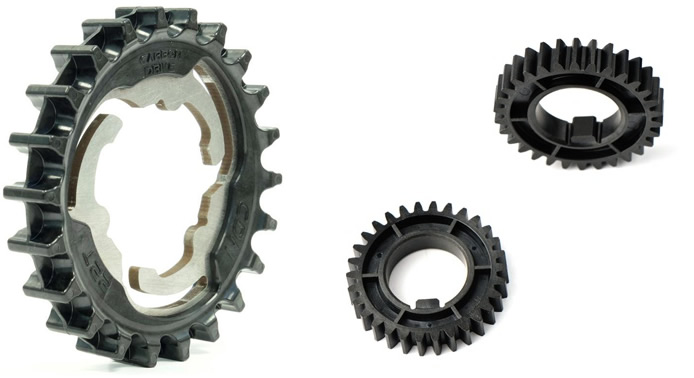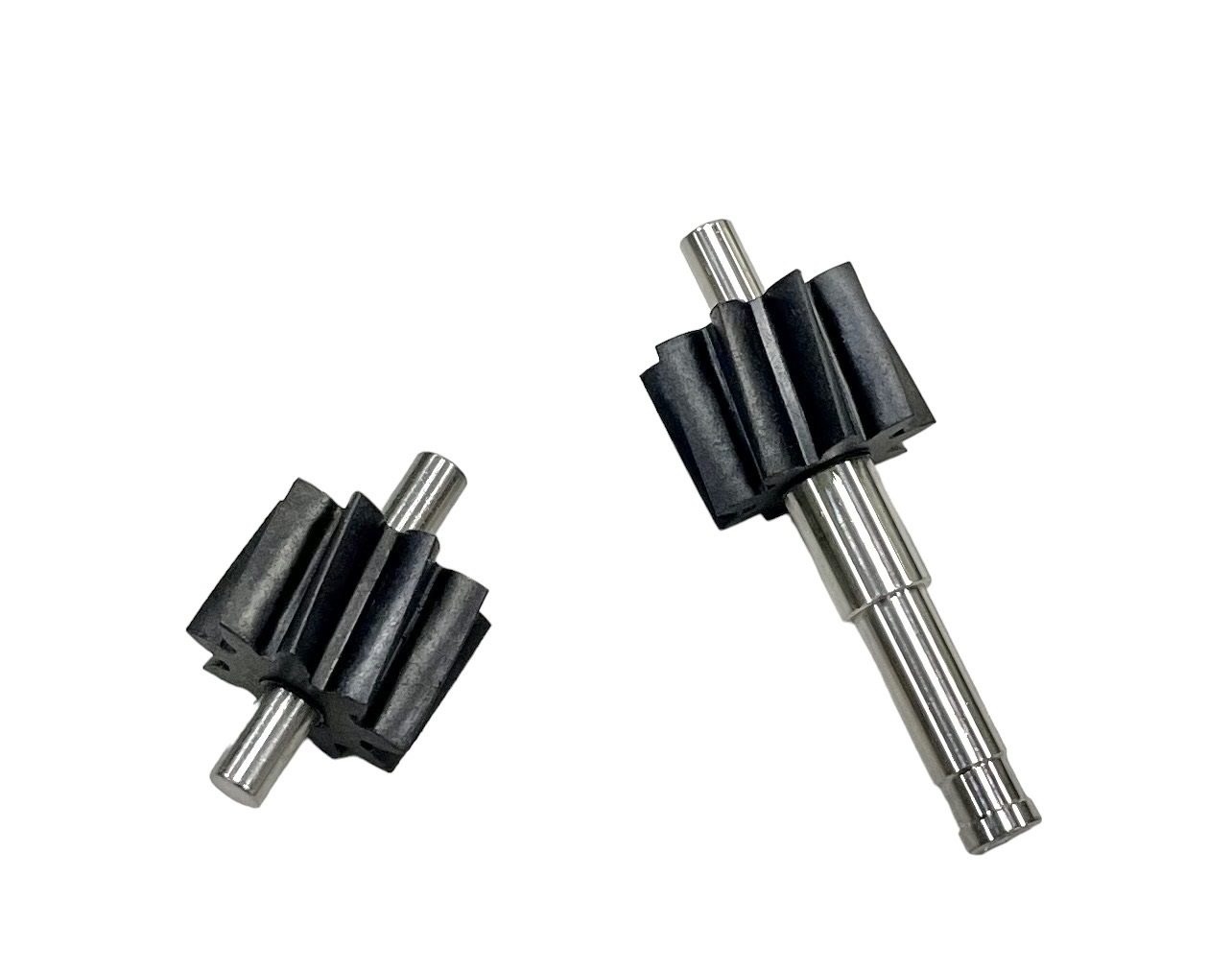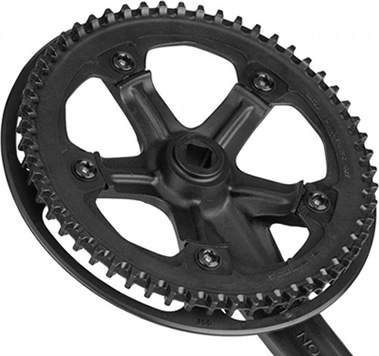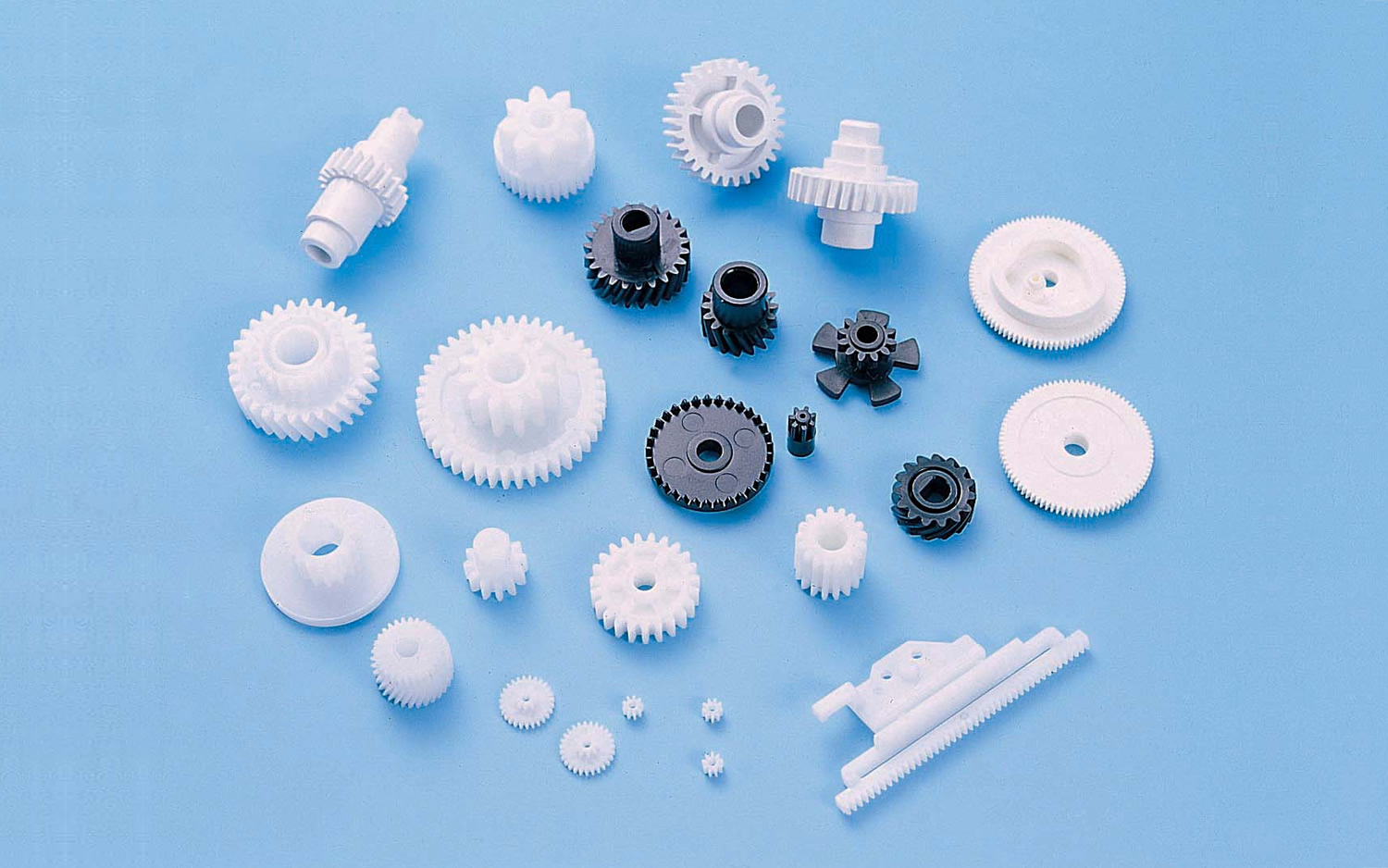Plastic Gear / Precision Gear


Application: Automotive, Electronic, Aerospace Industry in global market
-
In-house CPK Rate :≧ 1.33
-
Tolerance Range :Up to +/-0.01mm
-
Mold Size :600L*600W*600H ; up to 1,200kgs
-
Monthly Capacity :18 sets / Dies ; 15.8 million pcs / Overmolding & insert molding Injection parts
Material of the plastic gear / precision gear
-
Plastic Parts :PPS, PPA, PBT, PET, PEI, PC, POM, Nylon PA, PA6, PA66, PA9T, LCP, Derlin, Acrylic, etc.
-
Special Material :PEEK
Our typical insert moulded plastic gear / precision gear components
The types of plastic gear / precision gear insert moulding manufactured include :
- Electrical and electronic gear
- Pump gear parts
- Auto gear parts
- Switches gear parts
- Mechanical assemblies gear part
- Life science sensors gear
- High precision gears
How to make plastic injection molding gear part well?
Making plastic injection molded gear parts well involves a combination of careful design, proper material selection, precise manufacturing processes, and thorough quality control. Here's a step-by-step guide to producing high-quality plastic injection molded gear parts:
-
Design Optimization:
- Design the gear part with considerations for moldability, including draft angles, uniform wall thickness, fillets, and radii to minimize stresses and defects.
- Ensure that the gear geometry, such as tooth profile, pitch, and tolerance, is suitable for the intended application and manufacturing process.
-
Material Selection:
- Choose a plastic material that meets the requirements of the gear application, considering factors such as strength, durability, wear resistance, and temperature resistance.
- Select a material that is compatible with injection molding processes and can achieve the desired mechanical properties.
-
Tooling Design and Fabrication:
- Design high-quality molds with precision to replicate the gear part accurately and consistently.
- Consider factors such as mold material, cooling channels, gate type, and ejection mechanism to optimize part quality and production efficiency.
- Work with experienced tooling manufacturers to ensure the mold design meets the specific requirements of plastic injection molding gear parts.
-
Injection Molding Process Optimization:
- Select an injection molding machine with sufficient clamp force, shot capacity, and control precision for the gear part.
- Set up the machine parameters, including temperature control, injection speed, packing pressure, and hold time, to achieve complete filling of the mold cavity and minimize defects.
- Conduct process validation and optimization trials to fine-tune parameters for optimal part quality and production efficiency.
-
Quality Control Measures:
- Implement rigorous quality control measures throughout the manufacturing process.
- Conduct inspections of raw materials, in-process checks, and post-molding inspections to ensure part conformity to specifications.
- Utilize dimensional inspection, visual inspection, and mechanical testing to verify part quality and performance.
-
Post-Processing Operations:
- Perform any necessary post-processing operations such as deburring, surface finishing, or assembly to achieve the desired final part characteristics.
- Ensure that post-processing does not introduce defects or compromise part quality.
-
Testing and Validation:
- Conduct thorough testing and validation of the molded gear parts to verify performance, durability, and compatibility with the intended application conditions.
- Use testing methods such as mechanical testing, environmental testing, and functional testing to assess part performance and reliability.
-
Continuous Improvement:
- Continuously monitor and analyze manufacturing processes to identify areas for improvement.
- Implement corrective actions and process enhancements to optimize part quality, reduce cycle times, and increase production efficiency over time.
By following these steps and paying attention to detail at each stage of the process, you can ensure the successful production of plastic injection molded gear parts that meet the highest standards of quality and performance.
What should be cared for plastic gear part design?
Designing plastic gear parts requires careful consideration of several factors to ensure optimal performance, manufacturability, and durability. Here are some key aspects to consider when designing plastic gear parts:
-
Functionality:
- Understand the specific function and operational requirements of the gear within its intended application.
- Ensure that the gear design, including tooth profile, pitch, and diameter, is suitable for transmitting motion and torque effectively.
-
Material Selection:
- Choose a plastic material that offers the necessary mechanical properties such as strength, stiffness, wear resistance, and dimensional stability.
- Consider factors such as operating temperature range, chemical resistance, and environmental conditions when selecting the material.
-
Geometry and Tooth Profile:
- Design the tooth profile and geometry to ensure smooth and efficient engagement with mating gears.
- Optimize tooth shape, including pressure angle, tooth thickness, and profile modification, to minimize stress concentrations and wear.
-
Load Distribution:
- Distribute loads evenly across the gear teeth to prevent premature wear and failure.
- Consider factors such as gear size, number of teeth, and tooth profile to achieve balanced load distribution.
-
Strength and Durability:
- Design the gear with sufficient wall thickness and reinforcement to withstand the expected loads and operating conditions.
- Incorporate features such as fillets and radii to minimize stress concentrations and potential failure points.
-
Manufacturability:
- Design the gear for ease of manufacturing using injection molding processes.
- Ensure uniform wall thickness, draft angles, and other features to facilitate mold filling and ejection.
- Minimize the need for secondary operations or post-processing to reduce production costs and lead times.
-
Tolerances and Fits:
- Specify appropriate dimensional tolerances and fits to ensure proper assembly and functionality of the gear within the overall system.
- Consider factors such as clearance, backlash, and concentricity to achieve desired performance and minimize noise and vibration.
-
Surface Finish and Lubrication:
- Design surface finishes and textures to reduce friction and wear between mating gears.
- Consider incorporating features such as lubrication grooves or channels to facilitate proper lubrication and extend gear life.
-
Environmental Considerations:
- Evaluate the impact of environmental factors such as temperature, humidity, and exposure to chemicals on the gear material and design.
- Select materials and design features that can withstand the expected environmental conditions over the lifetime of the gear.
-
Testing and Validation:
- Conduct thorough testing and validation of the gear design through prototyping and functional testing.
- Use simulation tools to analyze stress distribution, load-carrying capacity, and performance under various operating conditions.
By addressing these considerations during the design phase, you can optimize the performance, manufacturability, and durability of plastic gear parts for their intended applications. Collaboration with experienced engineers and manufacturers can also provide valuable insights and expertise in achieving successful gear designs.

The main application for plastice injection gear parts
Plastic injection-molded gear parts find application across various industries and products due to their versatility, durability, and cost-effectiveness. Some of the main applications for plastic injection gear parts include:
-
Automotive Industry:
- Gears for automotive transmission systems, including automatic transmissions, manual transmissions, and differential assemblies.
- Actuators, motors, and mechanisms for power windows, seat adjustments, and HVAC systems.
- Timing gears, camshaft gears, and other components in internal combustion engines.
-
Appliances:
- Gears for household appliances such as washing machines, dishwashers, vacuum cleaners, and kitchen appliances.
- Mechanisms for opening and closing doors, drawers, and hatches in refrigerators, ovens, and microwaves.
-
Consumer Electronics:
- Gears used in printers, scanners, copiers, and other office equipment for paper handling and movement.
- Mechanisms for lens focusing, zooming, and image stabilization in cameras and optical devices.
- Gears and drive components in audio and video equipment, including cassette players, DVD drives, and projectors.
-
Industrial Equipment:
- Gears for industrial machinery, including conveyors, mixers, pumps, and packaging equipment.
- Actuators and positioning mechanisms in robotics, CNC machines, and automated manufacturing systems.
- Drive components for agricultural equipment such as tractors, harvesters, and irrigation systems.
-
Medical Devices:
- Gears and drive components in medical imaging equipment such as X-ray machines, CT scanners, and MRI machines.
- Mechanisms for fluid handling, drug delivery, and surgical instruments in medical devices and equipment.
- Components for prosthetic devices, orthopedic implants, and mobility aids.
-
Toys and Games:
- Gears and mechanisms in toys and games such as remote-controlled cars, robots, puzzles, and action figures.
- Gear-driven mechanisms for motion, sound, and interaction in electronic and mechanical toys.
-
Power Tools and Equipment:
- Gears for power tools such as drills, saws, grinders, and sanders.
- Drive components for gardening equipment, including lawnmowers, trimmers, and leaf blowers.
-
Sporting Goods:
- Gears used in bicycles, exercise equipment, fishing reels, and camping gear.
- Drive mechanisms for motorized sports equipment such as ATVs, snowmobiles, and personal watercraft.
These are just a few examples of the diverse applications for plastic injection-molded gear parts. The versatility and adaptability of plastic materials, combined with the precision and efficiency of injection molding processes, make plastic gears an integral component in a wide range of products and industries.
What must be cared for plastic injection gear parts measurement?
When measuring plastic injection-molded gear parts, several factors must be considered to ensure accuracy and consistency. Here are some key aspects to consider:
-
Dimensional Accuracy:
- Ensure that the gear part meets the specified dimensional requirements, including overall dimensions, tooth profile, pitch diameter, and gear ratio.
- Use precision measuring instruments such as calipers, micrometers, and height gauges to accurately measure critical dimensions.
-
Surface Finish and Texture:
- Evaluate the surface finish and texture of the gear teeth and surrounding areas to ensure compliance with specifications.
- Utilize surface roughness testers or visual inspection methods to assess surface quality and texture.
-
Tooth Profile and Geometry:
- Measure the tooth profile, pressure angle, tooth thickness, and other geometric parameters to verify conformity to design requirements.
- Use gear measurement instruments such as gear checkers, gear testers, or coordinate measuring machines (CMMs) for accurate assessment of tooth geometry.
-
Clearances and Fits:
- Check clearances and fits between mating gears to ensure proper meshing and functionality.
- Use gauges or inspection tools to verify clearances, backlash, concentricity, and other fit parameters.
-
Material Properties:
- Assess material properties such as hardness, density, and tensile strength to ensure consistency and conformity to specifications.
- Perform material testing using hardness testers, tensile testers, or spectroscopy equipment as needed.
-
Assembly Compatibility:
- Verify that the gear part is compatible with mating components and assembly processes.
- Check for any interference or compatibility issues that may affect assembly or performance.
-
Functional Testing:
- Conduct functional testing to verify the performance and operation of the gear part under simulated operating conditions.
- Use testing rigs, dynamometers, or functional prototypes to assess gear performance, noise levels, and efficiency.
-
Tolerance Analysis:
- Perform tolerance analysis to ensure that specified tolerances are achievable and suitable for the intended application.
- Consider factors such as manufacturing variability, assembly tolerances, and functional requirements during tolerance analysis.
-
Documentation and Traceability:
- Maintain detailed records of measurement results, inspection reports, and quality control data for traceability and documentation purposes.
- Document any deviations from specifications and corrective actions taken to address them.
-
Calibration and Quality Assurance:
- Ensure that measuring instruments are properly calibrated and maintained according to industry standards.
- Implement quality assurance processes to verify the accuracy and reliability of measurement data.
By paying attention to these factors and employing appropriate measurement techniques and tools, you can ensure the accurate assessment of plastic injection-molded gear parts and maintain high quality and consistency in production.
This is just a partial overview of Plastic Gear / Precision Gear. Are they the right solutions for you? Not sure how to apply them to your next project? Just contact our technical experts and we can offer helpful advice about how to get the best results from both processes.


